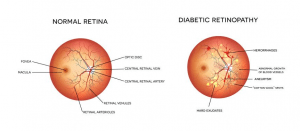A recent study published in the European Journal of Obstetrics and Gynaecology highlights the unexpected connection between diabetic retinopathy (DR) and latent Toxoplasma gondii infection in pregnant Hispanic women. Toxoplasma gondii (TG) is a common parasitic infection, which often remains dormant, yet under certain conditions, such as immune suppression, can reactivate and cause significant health concerns, particularly ocular complications. This study aimed to examine whether latent TG infection during pregnancy could lead to ocular lesions, specifically those associated with reactivation of the parasite. However, while TG-related ocular lesions were not detected, researchers uncovered a higher-than-expected incidence of DR among TG-positive women, shedding light on an underappreciated health risk.
The study involved a cohort of Hispanic women, both TG-positive and TG-negative, to monitor retinal changes during and after pregnancy. Retinal photography revealed that 43% of TG-positive women showed signs of diabetic retinopathy, even though many were not diagnosed with gestational diabetes (GDM) or pre-existing type 2 diabetes (T2D). Interestingly, a higher prevalence of GDM (20%) was noted among TG-positive women compared to their TG-negative counterparts (11.3%), suggesting a potential link between latent TG infection and diabetes-related complications.
One key finding was the resolution of DR in many women postpartum, with 23 out of 30 women who had DR during pregnancy showing no signs of the condition after childbirth. This transient nature of DR highlights the dynamic physiological changes during pregnancy, which may exacerbate underlying health conditions such as latent TG infection and diabetes. The study raises the question of whether retinal photography could serve as an innovative screening tool for identifying early signs of diabetic retinopathy in pregnant women, particularly those with latent TG infections.
In conclusion, the study underscores the importance of closer surveillance of diabetic complications during pregnancy, particularly in Hispanic populations who are at higher risk for both latent TG infection and gestational diabetes. More research is needed to explore the precise relationship between these conditions, but this study opens new avenues for preventive care and early intervention.
Journal Article: Elliott, A. F., Ojeleye, O., (et. al.) (2024). Diabetic Retinopathy during pregnancy in Hispanic women with latent Toxoplasma gondii infection. European Journal of Obstetrics and Gynecology, 294, 28-32.
Summary by Faith Oluwamakinde











